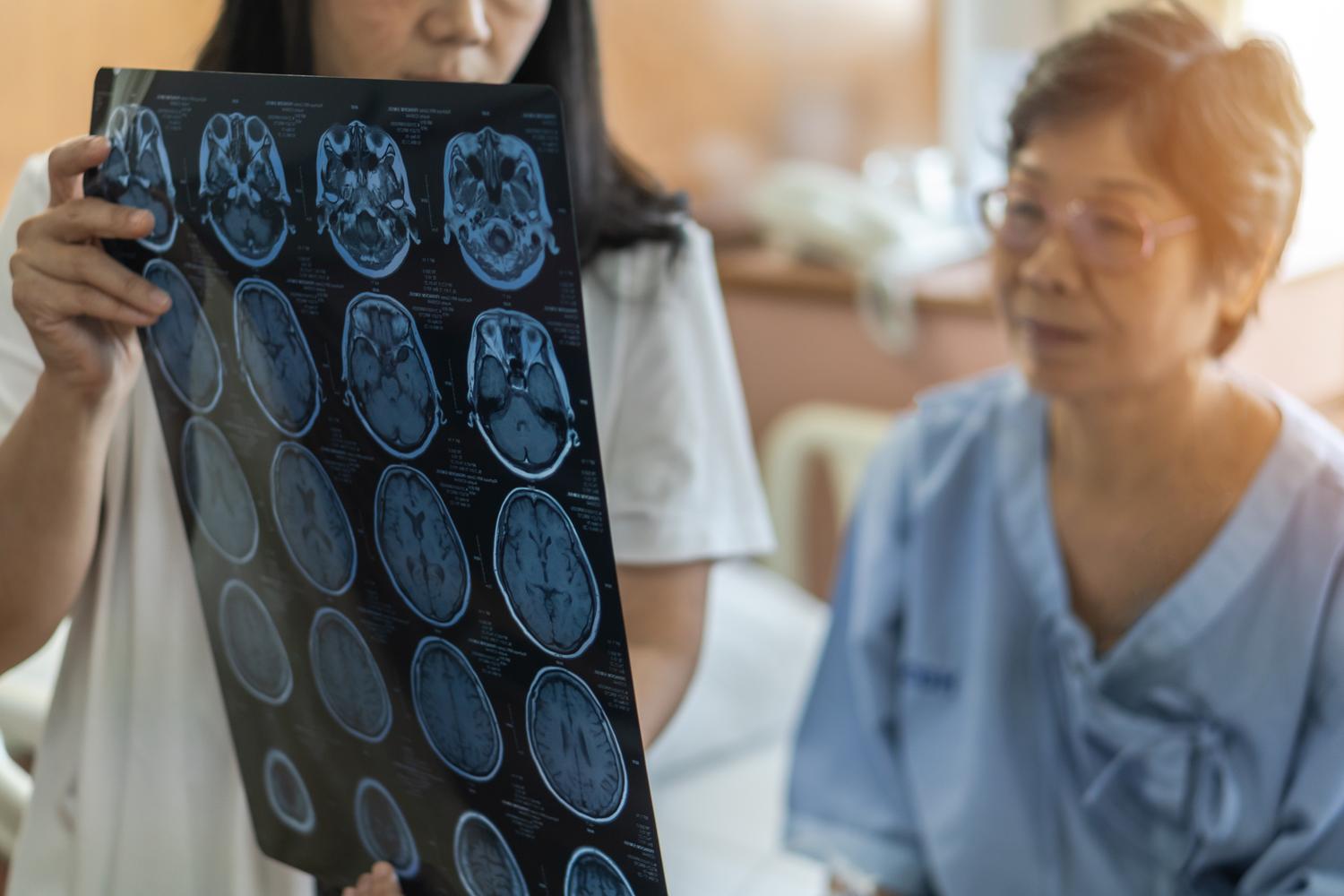International Women's Day: Common Female Health Issues and Treatments
Common health issues to be aware of this International Women's Day
International Women's Day is a day to celebrate the remarkable accomplishments, hard work and dedication of women around the world, and it’s also an opportunity to bring attention to health issues that disproportionately affect women, such as breast cancer, Alzheimer’s disease and osteoporosis. Being aware of the causes, signs and symptoms of these conditions is the first step toward combating them. In this post, we will discuss some common conditions impacting women, along with symptoms and preventative measures, to encourage better healthcare outcomes well into the future.
Alzheimer’s Disease
Alzheimer’s Disease (AD), which is sometimes referred to as senile dementia, is a degenerative neurological condition in which brain cells attack themselves and die, causing impaired memory, thinking and behavior. It is a progressive disease, which means that it worsens over time. Researchers believe that Alzheimer's is caused by a build-up of certain proteins - amyloid and tau - around brain cells. Amyloid (which causes plaques around the cells) and tau (which causes tangles within brain cells) prevent brain cells from effectively functioning and communicating with one another.
Alzheimer’s disease disproportionately affects women, who account for two-thirds of all patients with the illness. There are a number of theories that explain why women are at higher risk for developing Alzheimer’s than men. One theory is that women have stronger immune systems due to their extra X chromosome. This means that their bodies experience more neuroinflammation as a result of immune responses, causing amyloid plaques. Other possible explanations include longer female life expectancy (women live longer, and therefore are more likely to develop the disease as their brain ages) and certain societal factors such as work and family patterns (some findings suggest that higher levels of paid labor and education can slow memory decline).
The most common signs of Alzheimer's are memory loss and confusion. If you notice that a loved one is exhibiting symptoms like jumbled speech, forgetfulness or disorientation (getting lost frequently, forgetting where they are), schedule an appointment with your healthcare provider to discuss a diagnosis.
While there is unfortunately not yet a cure for Alzheimer's, there are drugs that can slow its progression and extend the time you have left with your loved one. There are also lifestyle actions that can reduce your risk of developing Alzheimer's, such as maintaining a healthy weight, exercising, eating a nutritious and varied diet with plenty of omega-3 fats and vitamins for brain health, getting quality sleep and keeping your brain active.
Breast cancer
Breast cancer is the second-leading cause of cancer death among women. According to the Centers for Disease Control and Prevention (CDC), nearly 264,000 women in the United States are diagnosed with breast cancer each year. It occurs when cells in the breast begin to grow abnormally. While both men and women have breast cells, the primary reason why breast cancer disproportionately affects women is that women produce more estrogen and progesterone, two hormones that promote cell growth.
Symptoms of breast cancer can vary depending on the stage and may include changes to the skin of the breast, a lump or thickening of the breast tissue, discharge from the nipple or pain in the breast or armpit.
The cause of breast cancer is not yet known, but certain factors are associated with an increased risk, such as age (risk increases after age 40), family history, previous radiation therapy to your chest area, hormone replacement therapy (HRT) use and obesity. There are also lifestyle factors that can increase your risks, such as lack of physical activity and smoking.
There are also a number of manmade chemicals linked to breast cancer and other cancers, including DDT, PCBs, PFASs and flame retardants. Though some of these chemicals are banned, many remain in the environment, and others are still used in everyday products such as nonstick pans, stain-resistant and water-resistant fabrics, aerosol sprays and plastic goods. Though it can be time-consuming, doing research as a consumer can protect you from harmful chemicals and benefit your long-term health.
Some other steps you can take to improve your health and lower your risk of breast cancer include eating a balanced diet rich in fruits and vegetables, maintaining a healthy weight, getting regular exercise, limiting alcohol consumption and avoiding smoking. It is also important to perform monthly self-exams to check for any irregularities, schedule regular mammograms according to guidelines set by your doctor and speak with your doctor about any personal history or family history that may put you at an increased risk of developing breast cancer.
Maternal health issues
The US has one of the highest maternal mortality rates among high-income countries. The leading causes of maternal death include post-childbirth infections, high blood pressure during pregnancy (pre-eclampsia and eclampsia), and complications from delivery. These issues also disproportionately impact women of color. A recent study from the Commonwealth Fund found that the US had the highest maternal mortality rate of high-income countries, with 23.8 deaths per 100,000 live births (over triple the rate of any other country studied). When looking only at Black maternal mortality, that rate doubled to a shocking 55.3 deaths per 100,000 live births.
The causes of these tragic statistics are heavily debated. Many blame rising healthcare costs as a factor in maternal mortality - missed or delayed OBGYN appointments can have serious repercussions for prenatal care and illness prevention, and nearly 40% of Americans put off medical care in 2022 due to cost. Some have pointed to the U.S.’s elevated rates of obesity, heart disease, and other chronic conditions that can lead to complications before, during, and after pregnancy. Others attribute the high mortality rate to America’s high volume of cesarean sections (and consequent infections).
It is most likely that all of these causes play a role in maternal mortality, and the general consensus among healthcare experts and medical professionals is that access to affordable health care and preventive care needs to be expanded, along with a larger, more diverse workforce of physicians in the U.S..
Osteoporosis
Osteoporosis is a condition when your bones become weak and brittle, causing them to break more easily. It can be caused by not getting enough calcium in your diet, not exercising, taking certain medicines and getting older. However, it disproportionately impacts women because of the hormone changes that occur during menopause. The female hormone estrogen is essential for healthy bones, and when estrogen levels fall after menopause, bone density begins to reduce.
Symptoms of osteoporosis can include pain in the back or hips, loss of height over time, and bones breaking more easily. Healthcare professionals typically recommend getting sufficient calcium in your diet and frequent exercise (especially weight-bearing exercises) in order to reduce your risk of developing osteoporosis. You should also take to your doctor about any medications that you’re taking; blood thinners like warfarin and heparin, cancer medications, thyroid medications, certain immunosuppressants, and other drugs can cause a reduction in bone density, so your doctor may want to prescribe a different medication to improve your bone metabolism.
Sexual health complications
Sexually transmitted infections (STIs) affect everyone, but females in particular are at risk of developing cervical cancer as a result of human papillomavirus (HPV), the most common STI. It is estimated that about 80% of sexually active women will contract HPV in their lifetime, but certain strains of the infection can put a serious strain on the immune system over time. This can cause cell abnormalities that can develop into cancer.
Symptoms of cervical cancer include vaginal bleeding after sex, bleeding between periods or periods that are heavier or longer than normal, vaginal discharge that is watery and has a strong odor, pelvic pain or pain during sex.
Consistent condom usage is a highly recommended method for preventing the spread of HPV and other STIs. You can also talk to your doctor about HPV vaccines, which can protect against certain types of cancers, and schedule routine screenings, PAP smears and checkups as preventative measures. Sexual education is also incredibly critical and effective at promoting sexual well-being and health, so it’s important to stay informed about safe practices, STI symptoms and the importance of healthcare access.
Stroke
Strokes (medical emergencies which occur when blood flow to the brain is blocked due to blocked arteries or blood clots from burst blood vessels) are the third leading cause of death for women.
Strokes are more prevalent in women for several reasons. Female hormonal birth control medication increases the risk of blood clotting, especially in older women who smoke. Secondly, women live longer than men on average, and stroke risk increases with age. Lastly, about a third of women have high blood pressure, which is the leading cause of strokes.
Symptoms of stroke include sudden numbness or weakness on one side of the body, trouble speaking or understanding language, difficulty walking or maintaining balance, confusion and trouble seeing in one or both eyes. To reduce the risks of stroke, it is important to maintain a healthy lifestyle by eating nutritious foods, exercising regularly and avoiding smoking. It is also important to get regular check-ups with your doctor in order to monitor any potential risk factors for stroke.
As we continue to celebrate the social, economic, cultural and political achievements of women on International Women’s day, we can also raise awareness about the chronic conditions and diseases that impact them. In doing so, we can help improve the lives of countless women who are at risk for these illnesses and work to ensure that women have access to better healthcare outcomes now and into the future.
Related posts

To help better understand breast cancer—how prevalent it is, how it’s diagnosed and treated, and how to prevent it—we put together this guide.

To honor the fight against breast cancer, we have put together a guide to breast cancer screenings, including screening recommendations for women, different screening tests, and how to screen yourself.

Osteoporosis is a bone disease that increases the risk of broken bones. Learn more about common risk factors for osteoporosis and how to treat the condition.

A stroke is a serious medical emergency that can severely impact a person's health and well-being. Read on to learn about common stroke symptoms, what it feels like to have a stroke, different risk factors and ways you can reduce your risk of a stroke.

Read up on key preventative care lifestyle changes and tips to avoid and prevent chronic conditions like diabetes, high cholesterol and heart disease.

Looking to reignite a spark in your relationship, or seeking ways to feel more connected with your own body? Read on for common ideologies and misconceptions about women's libido, along with tips to support your sexual health and well-being.

While no individual food no single food can protect people from cancer, these 19 foods are rich in antioxidants, phytochemicals and other compounds that may kill cancer cells, reduce tumor growth or reduce the risk of developing cancer.

Irritable Bowel Syndrome (IBS) and Inflammatory Bowel Disease (IBD) are two different conditions that often get mixed up. This article will talk about the key differences and similarities between IBS and IBD, along with common symptoms of each condition.

10,000 steps per day is a daily step count recommendation that is routinely passed around fitness and wellness circles. But do you really need 10,000 steps a day to walk your way to well-being?
